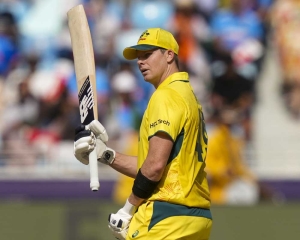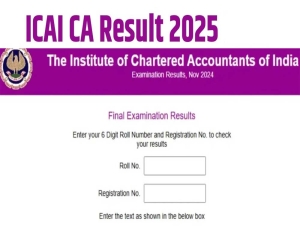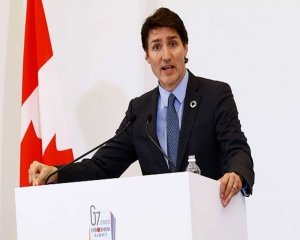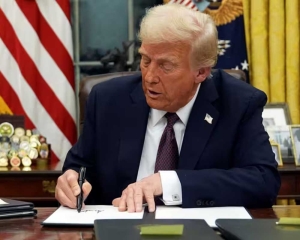The path to restoring the status quo appears fraught, with divergent interpretations between the two countries clouding any clear progress
The 21st October Agreement to disengage from Demchok and Depsang and resume patrolling as in April 2020, is being hailed as a breakthrough. It's not quite that: now Indian soldiers have to inform the Chinese of the timetable for patrolling and grazing. The government has called this disengagement as a pathway to return to conditions on the ground that existed in April 2020. It is also hoped this will lead to the disengagement of troops deployed in buffer zones, de-escalation, de-induction and return to status quo ante(RSQA) in April 2020. This is wishful thinking. COAS, Gen Dwivedi has expressed fear that the Chinese may encroach into buffer zones, so low is the trust factor.
He has called the latest disengagement a ‘low hanging fruit’. But the government has given the impression as if RSQA is around the corner. Far from it.From day one after the intrusions had taken place government has covered LAC in a smokescreen: making unilateral statements and blocking debate in parliament as it would undermine troop morale. But PM Modi’s famous statement after Galwan that no one came in and no one is in, took the cake. The government has banned former COAS Gen Naravane’s book Four Stars of Destiny as it removes some of the smoke screen. India has its interpretation of the 21st October Agreement and China its own. There were no joint statements after the Agreement and Modi-Xi Jinping bilateral on 24 October.
The Chinese readout of the 21st October Agreement and the bilateral are different from India’s like chalk from cheese. In the Agreement, the Chinese say: “two sides have reached a solution to relevant issues which has been evaluated positively. In the next step China will work with India to implement above solution”. There is no mention of RSQA April 2020, and no details of “the solution” and “relevant issues”. Similarly, on the bilateral which was scheduled for 45 minutes (more than half the time is taken up in translation) Indian readout mentions “complete disengagement”; “properly handling differences and disputes”; “Special Representatives would meet to resolve border dispute”. China’s readout: “two sides agreed on holding talks between Foreign Ministers and officials to bring relationship back to sound and steady development at early date”; “it notes progress and development on both sides and in border areas and recommends more communication and cooperation” …in short China has shown a vague inclination to implement border agreement.
For China border talks and bilateral relations are separate issues. For India normalcy on the border is linked to bilateral relations. Positions are poles apart.As there is no road map to RSQA with timelines, one will never know the progress on the three Ds: Disengagement, De-escalation and De-induction. Chinese will engage in endless military and diplomatic talks, making India the supplicant. We will continue to grope in the dark as we have for the last five years about the situation along the LAC.
For example, no one knew about the establishment of a Buffer Zone on Kailash Heights after we foolishly vacated it till Ladakhi graziers revealed that the Rezangla Memorial and other manmade forms had been obliterated. The loss of patrolling and grazing rights was revealed at a police conference where an ITBP officer mentioned losing 26 of 65 patrolling sites. The government has said frequently Chinese had amassed troops in violation of border protocols and “attempted to alter status quo”. They have altered it. True, there is a difference in the perception of LAC; there is no mutually recognised LAC but an Indian and Chinese perception of it. One precaution above all is paramount. Go by Chinese deeds, not their words, and verify before trust.
Last time verification of the status of the Galwan post resulted in a horrific medieval clash which led to the question of new protocols/agreements. Will troops be armed and have ammunition in their chargers? Former NSA Shivshankar Menon had suggested that a new modus vivendi is required for restoring trust as the one agreed between Rajiv Gandhi and Deng Xiao Peng after the Sumdorongchu imbroglio that took ten years to resolve but compared to intrusions in East Ladakh it was a single point intrusion.
The government has a fair idea of the framework agreement China calls the ‘solution’ and India's ‘RSQA’. It must share it with Parliament as any agreement on full disengagement must not create a 2017 Doklam-like situation where the Chinese hoodwinked India and Bhutan and established full control over the plateau- with fortifications, infrastructure and dual-use villages- which leads to the Siliguri corridor.
India has gone cold over its treaty commitment with Bhutan even as Thimphu was on its way to clinching a Doklam package deal with China which would have been a big strategic setback for India. Our non-strategic economists must be cautious about Chinese FDI contrary to what the Chief Economic Advisor has suggested – a carte blanche inflow of FDI. It must be verified case by case as per Press Note 3. Ban on Chinese apps must stay and Chinese 5G, 6G, Huawei and ZTE blocked. The trade deficit with China has rocketed to USD 105bn which is more than India’s defence budget of 2025-26. What India has achieved on the LAC is just a baby step in the restoration of RSQA in April 2020. Chinese have obliged in disengaging from Demchok and Depsang friction points because these pre-date the April 2020 intrusions. Let India not be under any illusion that it has overpowered Chinese coercion through deterrence. Far from it.
(The writer, a retired Major General, was Commander, IPKF South, Sri Lanka, and founder member of the Defence Planning Staff, currently the Integrated Defence Staff. The views expressed are personal)

























